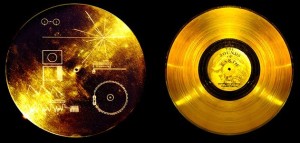Studying astronomy, one of the facts that becomes apparent is the universality of death. More than anything else, the universe is empty space. Of the parts that have matter, it’s mostly stuff that can’t make planets or anything solid—hydrogen and helium. Of the parts that are made of solid stuff, most are inhospitable hellscapes or deserts dry in ways beyond our normal experience—on Mars, for example, any liquid water dumped on the surface would boil away in an instant, despite being cold enough to snow here on Earth.
This contrasts our normal experience, where rampant life is the norm. Everything decays, and in its own way, “returns to nature.” Anything left alone too long is consumed by decomposers. Abandoned buildings crumble with plants penetrating their hollowed walls. Ivy over time, almost as if by magic, climbs buildings. Dead trees sprout fungi and rot. Dirt left alone springs grass of its own. Passing places undergoing these processes over time, we watch life render much to chaos throughout our lives. It gives life an apparent inevitability, the appearance that nothing will stop its relentless crawl throughout the planet.
This apparent inevitability of life on earth is a visceral part of our experience. Life as we know it thrives so vibrantly that it must be pushed back consistently: lawns mowed, fields plowed, bushes trimmed. It’s difficult to comprehend, if a good portion of your life has been spent pushing back life, that life really isn’t so relentless after all.
But most of the universe is not that way. When you realize death is the norm, it becomes apparent how singular Earth is. This is the only place in the universe we know of where life can thrive. Likely, there is life elsewhere, but of completely different forms and adaptations. This is likely the only place in the universe where this life can thrive: the plants, animals, bacteria, and fungi that human existence depends on.
“Mars,” some cry out, “we’ll move to Mars.” Not only does liquid water boil there at below freezing temperatures, the soil is a toxic rust powder and the atmosphere is little but a thin veil of carbon dioxide without gravitational and magnetic fields strong enough to retain it. The idea we can just show up, make an ocean, and have a barbecue in no time is applying this old idea that life is relentless to Mars—an idea that only works on Earth.
To the astronomer, the changes we’ve made to the climate could revert Earth toward normalcy—toward being completely inhospitable, like everything else in the universe. It’s not so much that we change the climate with every ounce of effort—rather, it’s that we disturb a delicate balance that makes Earth no longer exceptional, an exceptionality that we depend on for survival.
When this terror sets in, it becomes clear that climate change is the only issue that matters in the long run. No matter what you’re fighting for, it won’t matter what rights you have when there’s no one left to have them.


